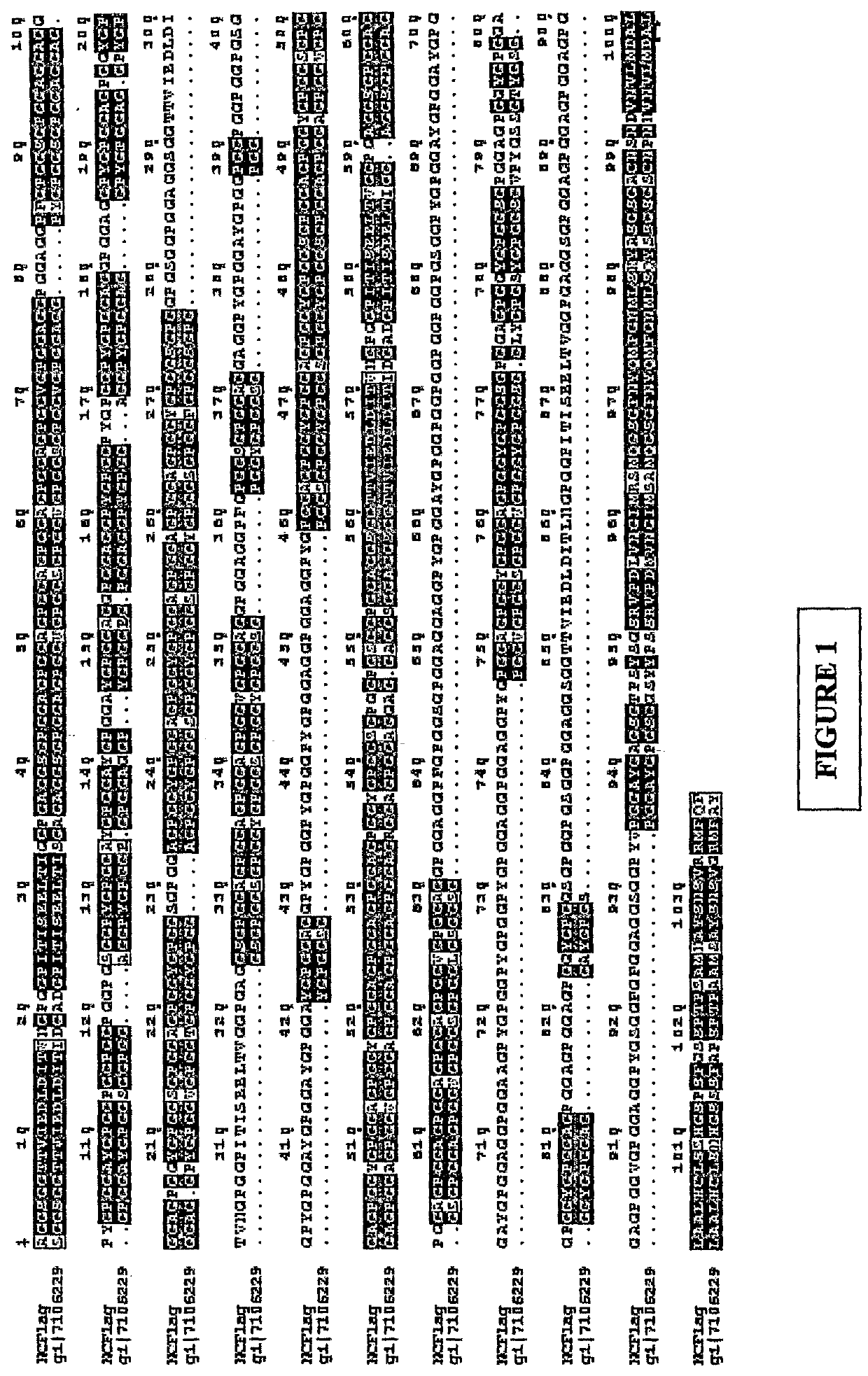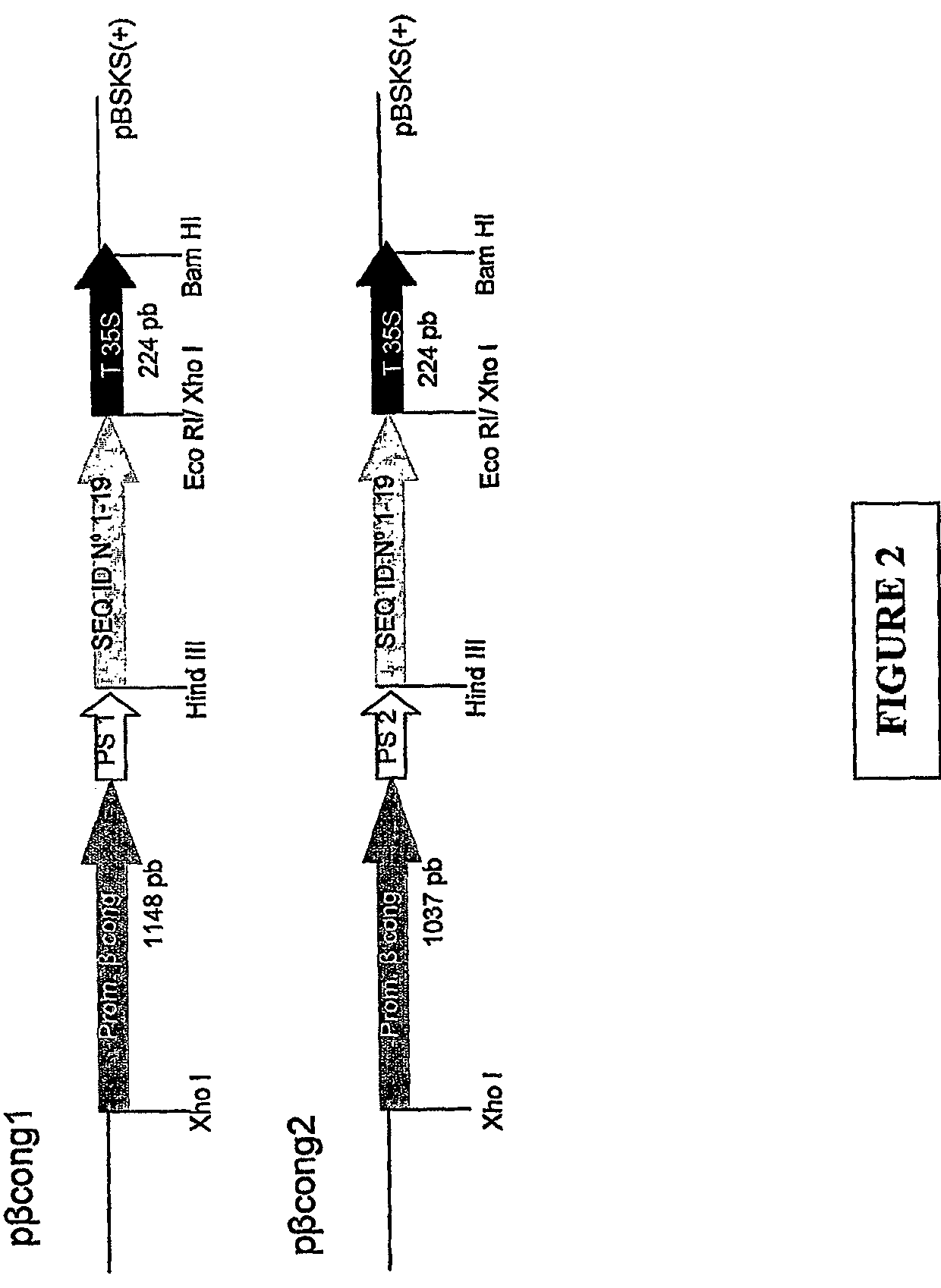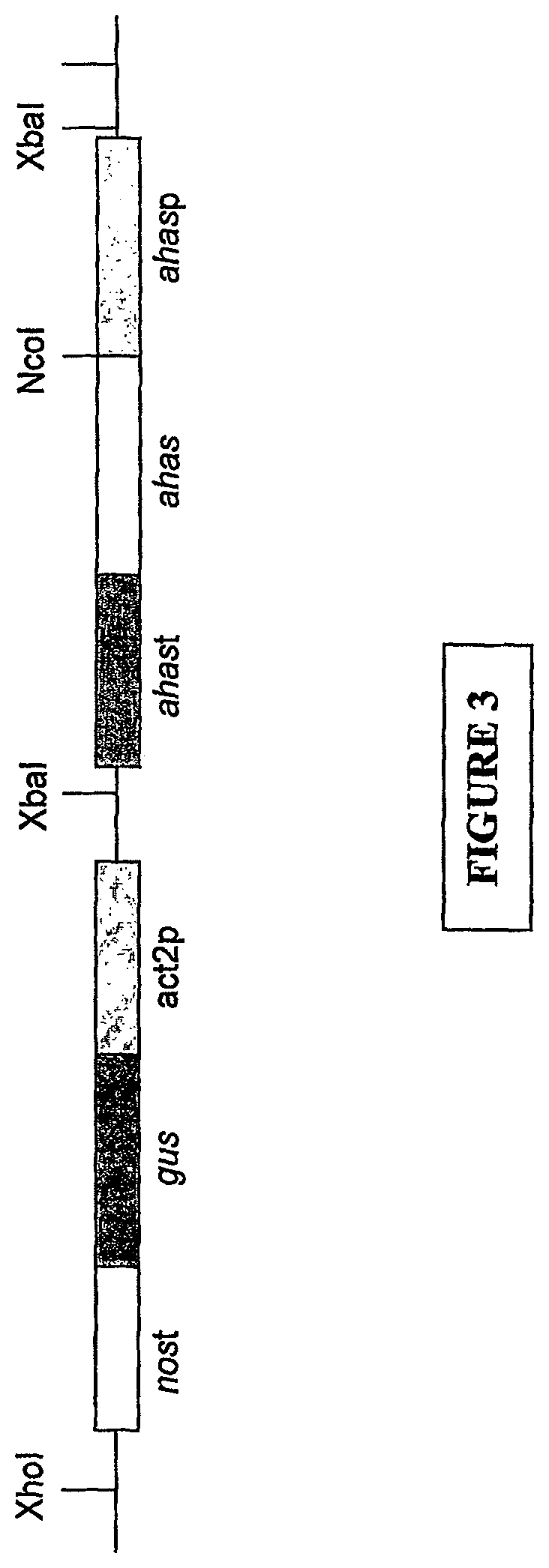Proteins from the webs of nephilengys cruentata, a vicularia juruensis and parawixia bistriata spiders isolated from brazilian biodiversity
a technology of vicularia juruensis and spider webs, which is applied in the field of protein from the webs of nephilengys cruentata, a vicularia juruensis and parawixia bistriata spiders isolated from brazilian biodiversity, can solve the problems of high production cost, unnatural spider webs, and inability to domesticate spiders for textile applications
- Summary
- Abstract
- Description
- Claims
- Application Information
AI Technical Summary
Benefits of technology
Problems solved by technology
Method used
Image
Examples
example 1
Collection and Classification of Spiders and their Webs
[0181]Silks of the species of spiders Argiope sp., Ephebopus sp., Nephila clavipes, Nephilengys cruentata, Avicularia juruensis and Parawixia bistriata were collected from the Brazilian biodiversity, mainly from the Amazon region, Atlantic rainforest and corral. The silks were dried at ambient temperature and analysed through infrared microscopy (FTIR).
[0182]Significant differences were noted in the results for the alpha- and beta-sheets, mainly associated to the flexibility and resistance of the silks in relation to Nephila clavipes. The FTIR has recently been used as a method for determining the secondary structure of proteins in solid state and has proved most viable, especially for insoluble proteins such as those of the spider webs. The secondary structures of the proteins were quantified using the recognition of standards method developed by Forato et al., 1998. The spectrums of the spider webs and products of transgenic e...
example 2
Obtaining Polynucleotide Sequences: Construction of cDNA Libraries, Sequencing
[0184]After collection, the silk producing glands of the spiders were isolated in laboratory, immediately frozen in liquid nitrogen and maintained at a temperature of −70° C. Following pulverisation, extraction of the Total RNA was performed using the reagent TRIZOL (Invitrogen), in accordance with the manufacturer's instructions. The Oligotex kit (Qiagen) was used for the purification of the mRNA used for the synthesis of the cDNA, preferentially through the use of the “SUPERSCRIPT II Plasmid System with GATEWAY Technology for cDNA Synthesis and Cloning” Kit (Invitrogen), following the manufacturer's guidelines. After synthesis and fractioning by size in chromatography columns, using Sepharose CL-2B resin (Pharmacia). Both large (1-5 Kb) and small (0.5-2 Kb) cDNA fragments were inserted in appropriate vectors such as pSPORT-1 (Life), pCMV-SPORT 6 or pTrueBlue (Genetix). The libraries thus obtained were in...
example 3
Mechanical Analysis of the Silks from the Different Spiders Species
[0190]Collection of Silk—
[0191]Five samples of each species with lengths of approximately 5 cm were positioned on a mechanical trial card, as formerly described by Stauffer et al. (Stauffer S L, Coguil S L, Lewis R V. Comparison of physical properties of three silks from Nephila clavipes and Araneus gemmoides. The journal of Arachnology. 1994; 22:5-11).
[0192]Measurement of Fibre Diameters—
[0193]The fibres were analysed using a Nikon Eclipse E200 microscope equipped with a camera. Each silk was observed magnified 800 times and the images were visualised with the SPOT Basic software. The diameters were determined using the ImageJ software, version 1.32 (http: / / rsb.info.nih.gov / ij / ), and the final value was obtained from the average of 5 measurements taken along the length of the fibres.
[0194]Mechanical Test—
[0195]Each fibre was tested with a Synergie 100 Mechanical Testing System (MTS), using a custom 10-g load cell. T...
PUM
 Login to View More
Login to View More Abstract
Description
Claims
Application Information
 Login to View More
Login to View More - Generate Ideas
- Intellectual Property
- Life Sciences
- Materials
- Tech Scout
- Unparalleled Data Quality
- Higher Quality Content
- 60% Fewer Hallucinations
Browse by: Latest US Patents, China's latest patents, Technical Efficacy Thesaurus, Application Domain, Technology Topic, Popular Technical Reports.
© 2025 PatSnap. All rights reserved.Legal|Privacy policy|Modern Slavery Act Transparency Statement|Sitemap|About US| Contact US: help@patsnap.com



